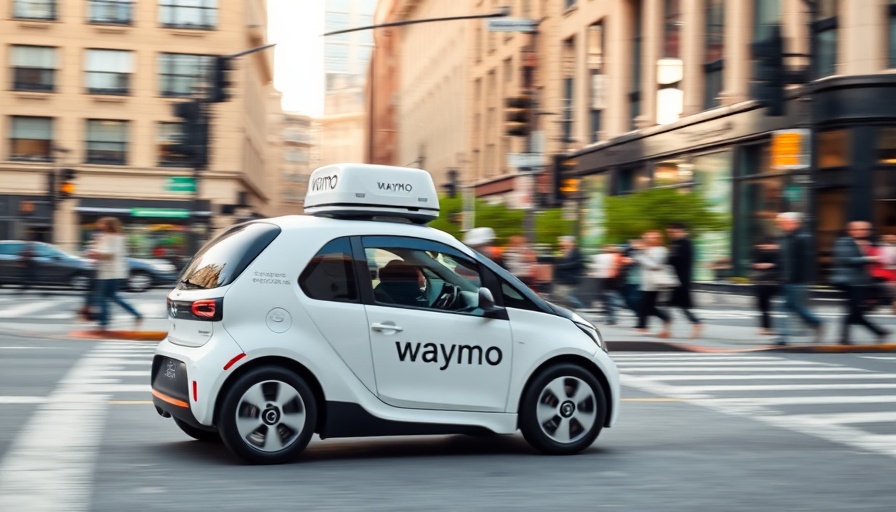
The Unexpected Challenges of Autonomous Vehicles in Urban Environments
In a world that increasingly embraces innovation, Waymo's recent incident at a Chick-fil-A drive-through in Santa Monica highlights the unanticipated challenges faced by autonomous vehicles. This incident, where a Waymo robotaxi became trapped after dropping off a passenger, caught the attention of many, as similar occurrences are gradually becoming a common theme in tech news. Without passengers aboard, the robotaxi's plight created a minor traffic jam, demonstrating the growing pains of relying on self-driving technologies.
Understanding the Factors Behind the Malfunction
Waymo has stated the robotaxi struggled to make a multi-point turn due to surrounding cars and the tight configuration of the drive-through lane. While no injuries were reported, the implications of this incident are significant as they raise questions about the reliability of robotic systems in everyday situations. This is not an isolated event; previous instances have shown robotaxis getting stuck in roundabouts and causing disruptions in high-traffic areas. It brings into focus the intricacies involved in programming these autonomous machines to operate seamlessly in dynamic environments, which continue to evolve.
Social Media's Amplification of Autonomous Vehicle Mishaps
The presence of social media has amplified scrutiny on incidents involving autonomous vehicles. Videos of robotaxis failing to navigate traffic or becoming immobilized have circulated widely, often drawing laughter or concern from viewers. The increasing digital discourse around AV mishaps poses a risk, as public perception can be influenced by viral content that may not always reflect the full story behind these failures. For instance, incidents like the one with the Chick-fil-A drive-through can overshadow the advantages of autonomous technology, such as enhanced safety statistics compared to traditional vehicles.
The Road Ahead: Future Implications for Robotaxi Services
As Waymo and other companies refine their autonomous driving technology, understanding customer experiences and addressing potential mishaps like those seen at Chick-fil-A will be crucial. The company’s expansion into cities like Phoenix, San Francisco, and Los Angeles tests the technology's adaptability in diverse environments, with lessons learned from every glitch further shaping the landscape of urban mobility. The ultimate goal remains to enhance the safety and efficiency of robotaxi services, moving towards a future where public trust in autonomous systems can flourish.
Key Lessons Learned from the Chick-fil-A Incident
1. **Navigational Complexity**: Programming autonomous vehicles involves understanding and responding to real-life navigation challenges, particularly in crowded spaces like parking lots and drive-throughs. The Chick-fil-A trap demonstrates that programming can still struggle in complex scenarios.
2. **Public Perception Management**: Incidents that gain traction on social media necessitate strategic management from tech companies. Proactive communication and transparent problem-solving may help mitigate negative public perception.
3. **Testing Protocols**: Companies need robust testing procedures that simulate interactions in everyday situations to ensure vehicles can handle the diverse challenges presented by urban environments.
Conclusion: Innovating While Learning
As Waymo navigates the complexities of autonomous driving amid urban distractions and challenges, it remains vital for all stakeholders—engineers, companies, and the public—to maintain open dialogue about the benefits and limitations of such technologies. This way, we can foster a more informed approach to embracing future innovations in the realm of transportation.
 Add Row
Add Row  Add
Add 



Write A Comment